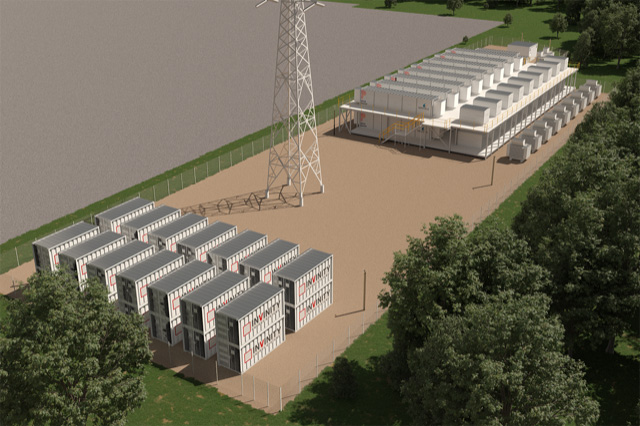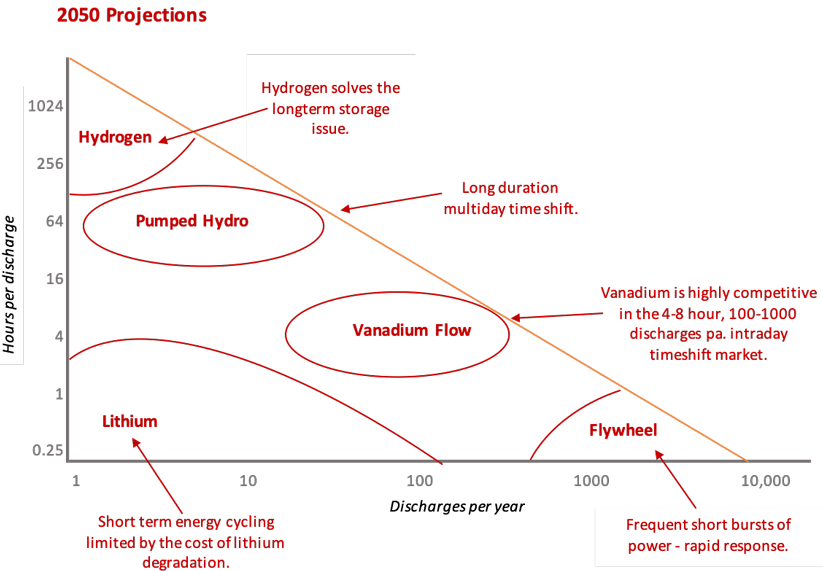Vanadium Battery Technology
Vanadium flow batteries are well proven in many installations around the world and are now coming into full production. They have a number of significant advantages over Lithium-Ion batteries; most importantly vanadium batteries have a lower cost of storage, in similar use scenarios, over their 25 years plus life expectancy, which is improving rapidly.
Comparison of vanadium and lithium-ion batteries
| Vanadium Batteries | Lithium-Ion Batteries |
|---|---|
| 60 – 100% Utilisation | 10 – 20% Utilisation |
| Large, multiple, stacked services Daily, heavy usage Energy focussed Low energy density Suitable for fixed applications | Single Service Occasional managed usage Power focussed Mid energy density Suitable for mobile applications |
| Cheap energy | Cheap power |
| No Degradation Low Maintenance | Regular maintenance and management |
| 25+ years life expectancy | Short life 3-10 years |
| Fully recyclable | Disposal issues |
| 100% Depth of discharge | 0–50% Depth of discharge |
| Safe, no fire risk | Fire risk Must be managed |

Credit: 2MW/5MWh Invinity flow battery – Energy Superhub Oxford project, Cowley, UK
Storage complements solar projects
Benefits of co-located energy storage
- Gives control over when solar is used
- Time-shift the use of solar generation to peak times
- Opportunity to take advantage of increasing market volatility
- Enables greater deployment of renewables
Storage technologies in 2050
Vanadium batteries are best placed to support frequent intraday time shift grid support.

